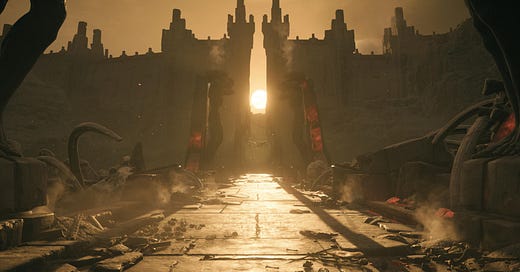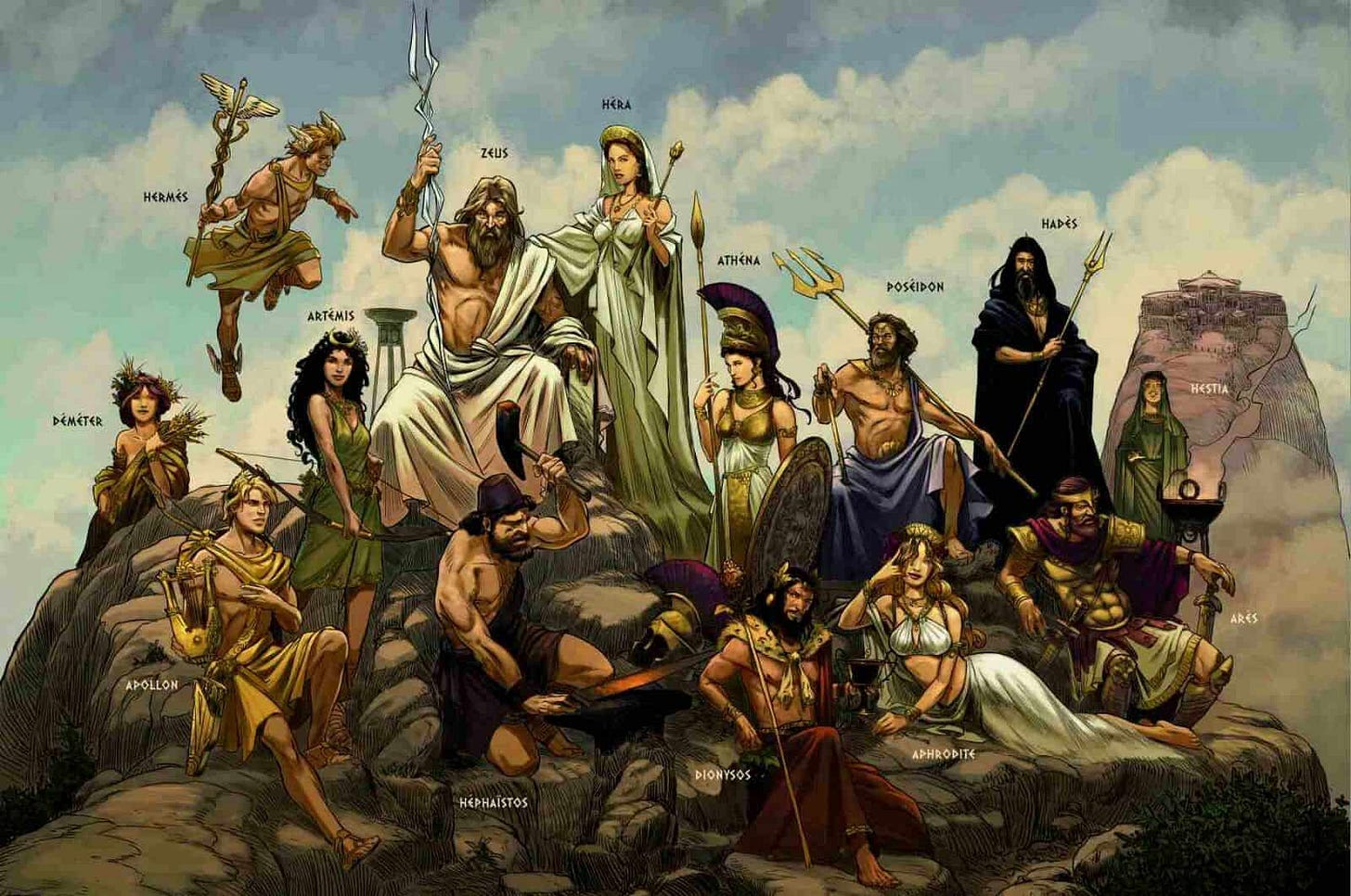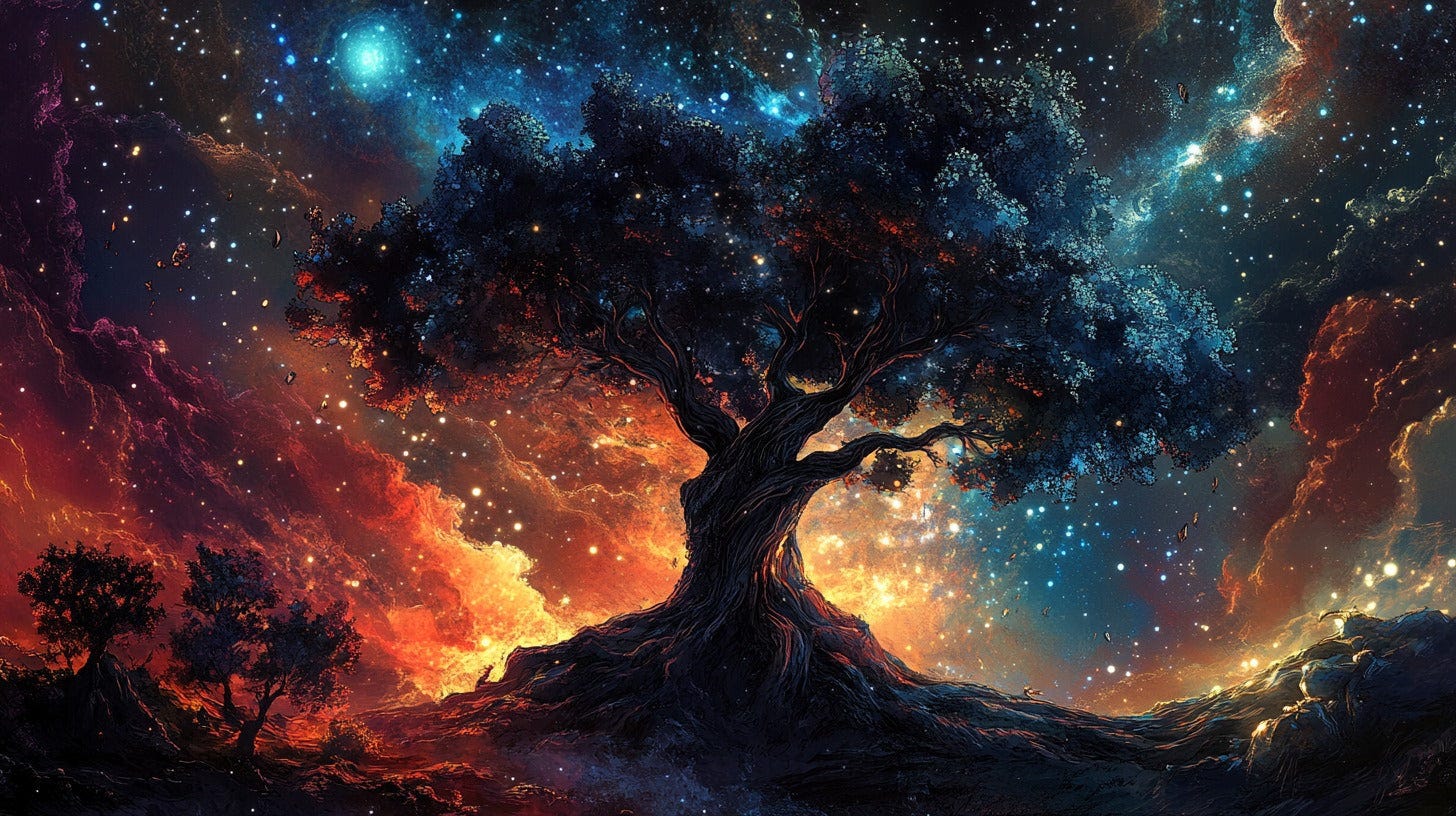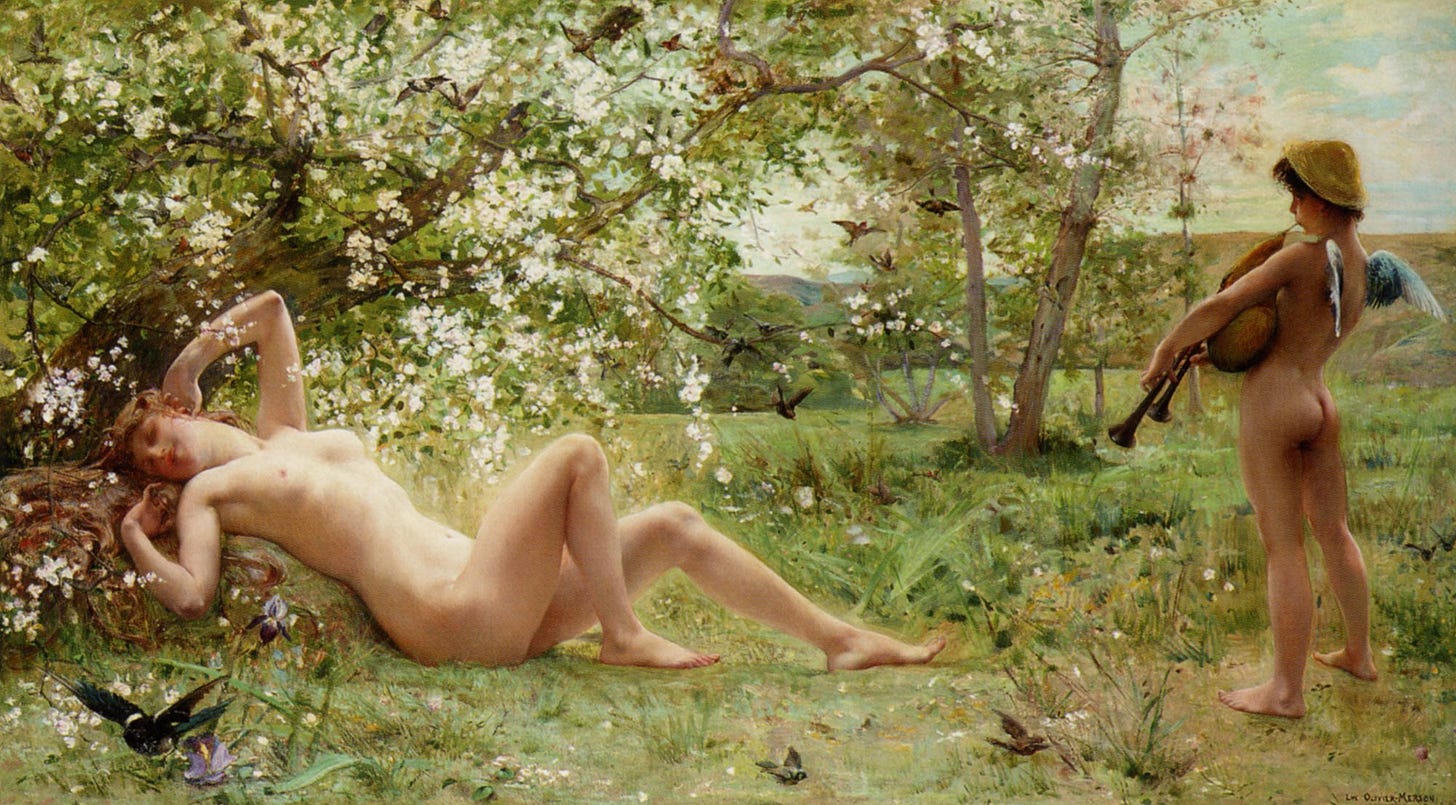The cosmos is not the universe. This is the first heresy we must be willing to utter. The cosmos is a mirror, a grand projection of the inner split we dare not name. The split between consciousness and the unconscious, forged in the earliest exiles of our psychic life. The cosmos is not reality. It is the mythologized hallucination of the fracture we mistake for the world.
In the Orphic mysteries, the god Phanes is the first-born, radiant, non-binary being, resplendent, and whole. He emerges from the cosmic egg only to be torn apart. Dionysus, his later echo, repeats this fate. And this dismemberment is not merely myth: it is a psychological fact. A developmental catastrophe. From about 8 months to 3 years old, we undergo what Winnicott called the rupture of omnipotence. The infant once fused with the mother begins to feel abandonment, separation, hunger, neglect. In this psychic wound, the original wholeness, Phanes, is shattered. The gods in their dualistic form are born as trauma’s echo. Yet this wounding can’t be verbalised, so it instead becomes enshrined as cosmos, pre-verbal mythic figures, we externalise, and have become stories we live within.
The psyche does not begin with language. It begins in sensation, touch, hunger, warmth, absence. Long before we speak, we feel. And it is in this preverbal state that the deepest fractures occur. The infant’s world is one of pure immersion, fused with the mother, with no boundary between self and other. When this symbiosis ruptures, through abandonment, inconsistency, or neglect, it leaves a wound that precedes thought. A rupture before reason. A scream before speech.
This is why the psyche cannot speak its trauma in literal terms. The injury is not linguistic. It is somatic, emotional, relational. And so, when the psyche attempts to process this pain, it reaches for the only language available: symbol. Symbol is the speech of the unspeakable. Myth is the grammar of the wounded soul.
What we call “archetypes” are not esoteric ideas floating in the collective mind. They are the psyche’s attempt to bridge the abyss between instinct and awareness, using images to say what cannot yet be said. The gods, the stories, the metaphors, they are emergency translations, metaphoric emissaries from the body’s memory, sent to communicate pain that was never named.
This is why myth feels sacred. It carries a charge. Because it’s not just story, it’s compressed affect. It’s the child’s cry, wrapped in metaphor, so that the adult can finally hear it without collapsing. The psyche, unable to express its wound directly, projects it outward, shaping it into mythic form so that it might be seen, at a distance, in a way we can survive. We do not dream in sentences. We dream in images. Because our most essential experiences were not encoded in words.
Language came after the fracture. It came too late to catch the scream. And so the psyche became a poet, a mythmaker, not out of grandeur, but necessity. To survive, the wound had to find a form. And myth became that form. A symbolic vessel to hold what could not otherwise be borne. In this light, the entire symbolic world, the gods, the stories, the rituals, is not just art. It is a nervous system trying to speak. A body trying to remember. A soul trying to rejoin its own voice.
So myth is not simply a set of stories we tell to understand ourselves. Myth is the calcified memory of trauma, dressed in divine language. But the gods and their stories are not just born from this trauma, they are also instinct. They are what bridges the chasm. When consciousness splits from the unconscious, instinct can no longer speak directly to consciousness. So it becomes divine. Personified. Projected. The gods are the intermediaries between the body's knowing and the mind’s exile. Myth is not a creative luxury, but a necessity in a divided psyche.
And so, when Phanes is torn apart, and the psyche cannot hold the immediacy of wholeness, it begins to mythologize, not because it wants stories, but because it needs translators. It cannot hear the body anymore. It cannot feel the unbroken pulse of being. So it invents gods and symbols to deliver messages it can no longer receive directly. Archetypes and dreams are the translators of instincts, speaking in symbols the divided self can tolerate.
Trauma as Architect
So the tragedy is: Most spirituality is not healing. It is trauma with incense. Thus the wound mythologizes itself. The ache creates symbols to hold itself together. Over time, these symbols become sacred. We build temples to the ache. We bow to it. But the wound really is the child screaming for a mother who does not come.
When the infantile trauma is unprocessed, it does not merely vanish. It can become transcendent. It is elevated, glorified, turned into language about the Divine Feminine, the Great Mother, Source, the Goddess. But listen closely, as beneath the chants and the chakra music, what you will hear is the sound of a child crying for someone who never arrived. The cosmos, in this light, becomes a cathedral of trauma. A temple built to worship the very ache we refuse to grieve. That we externalise, as we lack the words to even know or express this pre-verbal trauma.
When the Split Heals
But what happens when the unconscious and consciousness begin to speak again? The gods go quiet. The archetypes disappear. The myths dissolve. They are no longer needed. There is no need for an external Hermes when the psyche is integrated and words come naturally. No need for an external Artemis when instinct, body, and shadow are held. No need for an external Dionysus when joy and ecstasy are no longer split off into ritual madness. The external gods only exist because we refuse to be whole. They actually live within us, as modes of beings, instincts, patterns of how we can be within the world. Yet only if we allow the split to heal. As Phanes when reborn, is both the form of the cosmos, and what wears the masks of all different gods.
When the split is mended, the archetypes become roles, not rulers. We inhabit them like masks in a theatre, not as eternal truths, but as living metaphors we choose to embody. Consciously. Freely. Without worship. Without exile. The divine is no longer above. It is here, in our eyes, our hands, our trembling presence. Not as projection. But as being. The archetypes fall away, not because they were false, but because they were needed only as bridges. When instinct and awareness reunite, no priest is necessary. No god is needed to speak for hunger. No myth is needed to justify joy. Instinct no longer hides behind the veil of divinity. It is direct. Untranslated. Raw and sacred in its immediacy.
Beyond the Cathedral
We can leave the cathedral. We can walk out. We can look at the stained glass and say, "I understand you now. You were my pain. You were my hunger. You were the ache I couldn’t name." And we can let the gods return to the silence they came from. We can stop worshipping the wound. We can become whole. Even in Genesis or Norse myth, creation begins with a separation. Think light from darkness, heavens from earth, waters above from waters below. This is not just mere cosmology; it is a mythologized memory of psychic rupture. So when God in Christianity says, "Let there be light," it mirrors the moment awareness breaks from instinct.
To go beyond the trauma-cosmos is not to destroy it, nor rebel. It is to see it for what it is: a projection. A collective story every child tells itself to survive. That then became enshrined as collective truth, to be re-enacted and called holy. However, the moment this becomes conscious, truly conscious, the archetypes begin to dissolve. They are no longer necessary intermediaries. No longer gods. They return to their roots as roles, as expressions, as possibilities. The myth becomes play. The temple becomes body.
But many remain trapped at the cathedral gates. Believing that to be spiritual means to become pure. That to be worthy means to deny the body. This is the loop: purity as penance. Ego repression as punishment. Asceticism as a apology for even having been wounded in the first place. But the ego is not the enemy. It is the scar tissue of the split. The survival shell. You do not kill it. You let it melt. Overcoming the ego is not an act of will. It is not a conquest. It is the dissolving of the trauma that created the ego in the first place. The wound that required protection. The ache that needed an identity to contain it. And this is where Nyx returns.
To overcome the ego is to return to the dark. Not the dark of despair, but the dark of mammalian night. The felt sense beneath narrative. The primordial hum before thought. This is the true healing, not ascent, but return. Not transcendence, but re-embodiment. The wound dissolves into the body of Nyx. And with it, the entire edifice of spiritual performance collapses. You do not become good. You become real.








